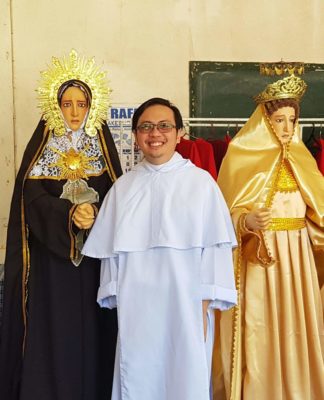UST BOOSTED its international profile in academic year 2014-2015, strengthening its ties with universities abroad that resulted in symposia and research partnerships, among others, a report from the Office of International Relations and Programs showed.
Twenty new bilateral agreements with international universities were forged while 93 memorandums of understanding (MOU) were inked, 13 of which were for review and renewal, and six in progress.
University students and faculty members interacted with international faculty from 20 different countries from Asia, Australia and Oceania, United States, and Europe who visited the University throughout the year.
Seven visiting professors received a one-year academic appointment while 58 others spoke in conferences and attended lectures and workshops.
“Our [Quacquarelli Symonds (QS) rating] is three-star in internationalization and basically the indicators that they measured are the international collaboration on research, international students on degree programs, and others. Also, there has been a significant improvement specially when it comes to student mobility,” Office of International Relations and Programs Director Lilian Sison said in an interview.
Although UST dropped two notches in the 2015 ranking of top Asian universities by London-based consultancy agency Quacquarelli Symonds, the University still tops other Philippine schools in the international faculty criterion. It ranked 65th with a score of 30.80 points, ahead of Ateneo de Manila at 118th and the University of the Philippines at 131st.
In April this year, UST was awarded a 4-star rating in the QS Stars University Rating scheme.
Sison boasted of the University’s student mobility, as 195 outbound students went abroad for studies, “sandwich” programs, internships, and history and language courses.
Data from Sison’s office showed that 50 percent of the 195 outbound students went to Asian universities, 29 percent to the US, 17 percent to Europe, and six percent to Australia.
An additional 190 student leaders attended leadership camps and international conferences. A total of 241 in-bound students took part in language and culture courses, internships, community immersion and service learning—75 percent of which came from Asia, 20 percent from Australia, and 5 percent from the United States.
Research collaborations
Seven new research collaborations were forged in the areas of rehabilitation science, biology, and chemistry, four of which received grants from international funding agencies such as the US Agency for International Development, US National Science Foundation, United Nations Educational, Scientific and Cultural Organization, Manila and Taiwan economic and cultural offices, and the International Foundation for Science.
Forty-five Thomasian faculty and researchers presented 52 scientific and scholarly papers across disciplines in international conferences and scientific meetings.
The University, under a collaboration with Curtin University and the support of Australia Awards, established a new post-graduate dual degree program in Metallurgical Engineering.
UST is also host to 506 international students from 30 different countries.














